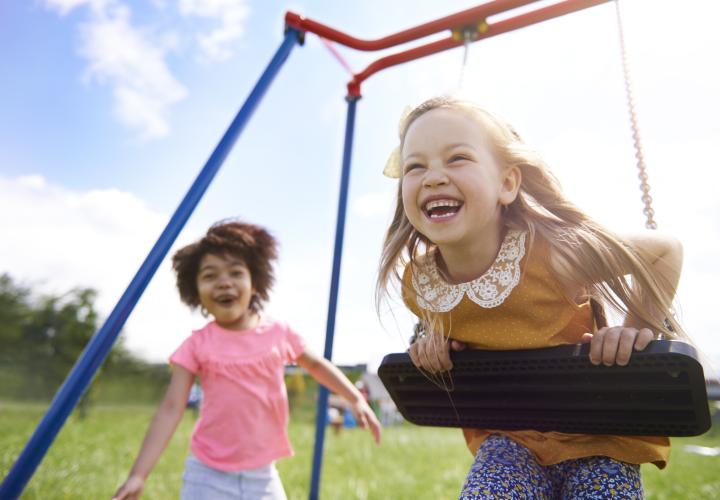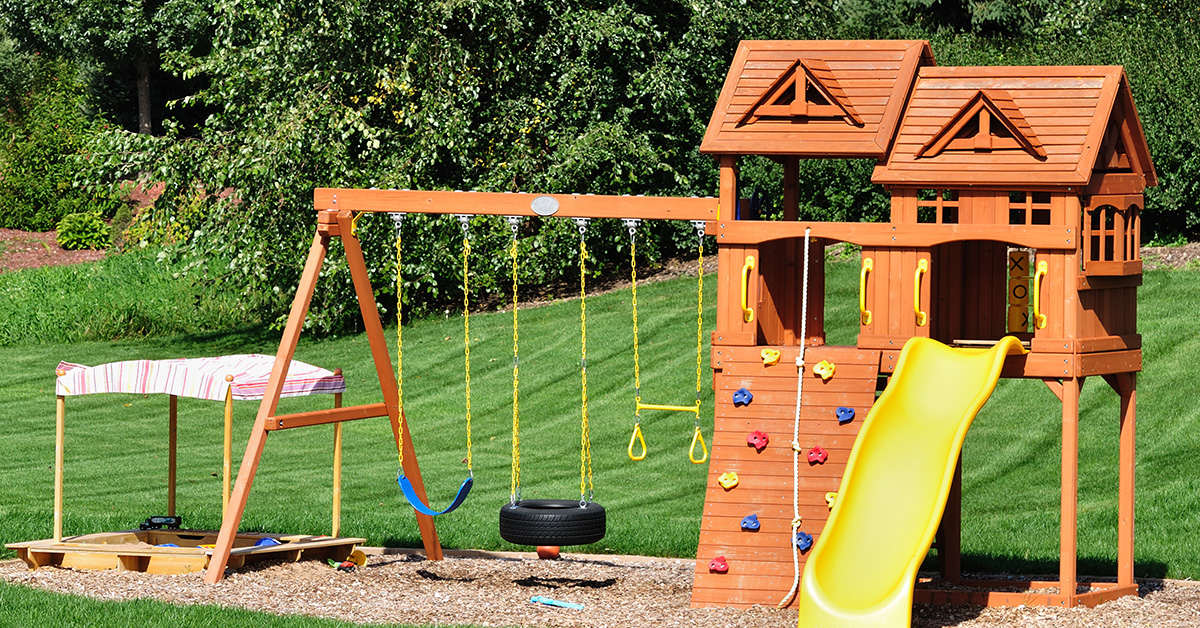Choose the right protective ground covering!
Many playground injuries involve falls, so it’s important that kids only play on equipment with appropriate ground cover cushioning beneath them. Most schools and towns make sure that public equipment has appropriate ground cover – but only 9% of home playgrounds have adequate protective ground covering.
If you’re installing (or already have) a playscape at home, here’s what’ll you need.
- Prepare a soft surface underneath play equipment. Wood chips, sand, or mulch create a soft bedding that will offer some protection in case of a fall.
- If you’re using mulch, look for “playground mulch,” which is free of chemicals, sticks, leaves and other debris found in typical garden mulch. Avoid rubber mulch (even when it’s labeled for playground use), which contains toxic chemicals.
- The wood chips, mulch or sand should be at least nine inches deep.
- The soft surface should extend at least six feet out from all sides of the equipment.
- Never place play equipment on a hard surface, indoor or outdoor. Keep in mind that carpet does not count as soft – instead, use of one of the ground covers above.
Follow these 10 tips for playground safety.
- Always supervise children on playscapes, and pay extra attention to younger kids on climbing equipment.
- Check that the play area is clear of dangers such as stakes, rocks or stumps sticking out of the ground.
- Make sure kids wear clothes without drawstrings or cords, and take off bike helmets, necklaces and any other accessories that could get caught on equipment. Accidental hanging is the top cause of home playground deaths.
- Never attach ropes, clotheslines or pet leashes to equipment, or anything else that could accidentally lead to strangulation.
- Avoid any equipment that has openings where your child’s head could get stuck.
- Make sure swing seats are made of plastic or rubber. Avoid metal because it can be hot enough to burn the skin of young children, or wood which can cause splinters.
- Ensure that play equipment is age-appropriate and has appropriate guardrails to prevent falls. Try the handgrips to verify they are shaped and sized for easy gripping.
- Teach your children how to use playground equipment properly – slide feet-first, sit (don’t stand or kneel) on swings, don’t climb outside guardrails, etc.
- Trampolines are not recommended for home or outdoor playground use, only for supervised training programs. When they are used, more than one child on a trampoline is a major risk factor for injury, particularly to the child who weighs less.
- Keep in mind that obesity is linked to more severe injuries in kids – so encourage kids to eat healthy and exercise for both overall health and injury prevention. Here’s help with meal-planning.
If your child needs emergency care, Connecticut Children’s Emergency Department is here 24/7.

